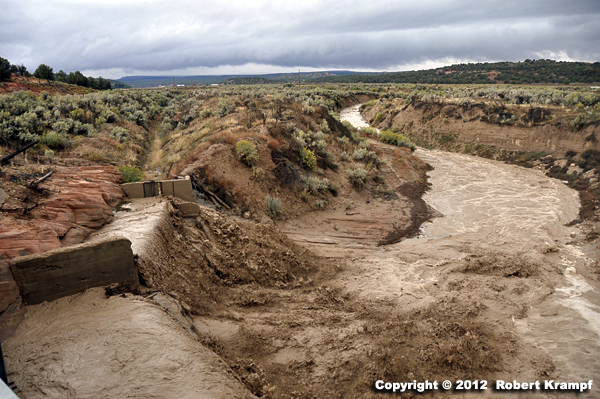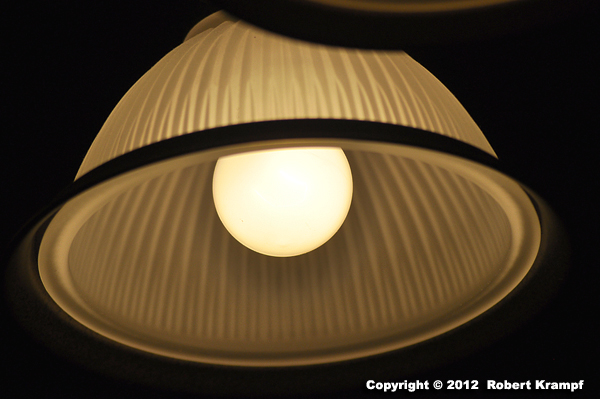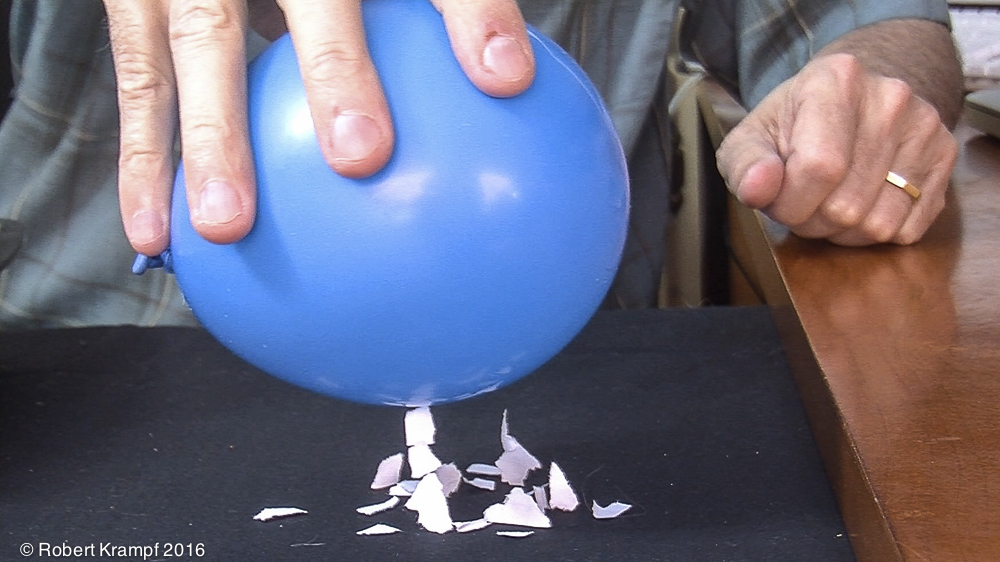Here are some science questions to help you test your general science knowledge. They will also show you which of the Florida, Utah, and NGSS science standards each question is testing.
The questions are chosen randomly, so this quest will be different each time.
Get 5 more random questions.
Would you rather see the most recently added questions?

These cells have a cell wall. What does that tell us?
-
These are young cells.
No. Even new cells can have a cell wall. -
These are plant cells.
Yes! Plant cells are surrounded by a cell wall, which provides structure and protection. -
These are animal cells.
No. Animal cells do not have a cell wall. -
These are dead cells.
No. Being alive or dead does not change whether a cell has a cell wall or not.
Click to see which state standards this question tests, and which of my videos, experiments, and other resources support that topic.
Florida
SC.6.L.14.4 Compare and contrast the structure and function of major organelles of plant and animal cells, including cell wall, cell membrane, nucleus, cytoplasm, chloroplasts, mitochondria, and vacuoles.
| Osmosis | video, checked |
| Review Cells-1 | practice |
| Review Cells-2 | practice |
| Review Cells-3 | practice |
| Review Cells-4 | practice |
Utah
UT.7.III.1.c Differentiate between plant and animal cells based on cell wall and cell membrane.
| Review Cells-1 | practice |
| Review Cells-2 | practice |
NGSS
MS-LS1-2 Develop and use a model to describe the function of a cell as a whole and ways parts of cells contribute to the function.
| Osmosis | video, checked |
| Review Cells-1 | practice |
| Review Cells-2 | practice |
| Review Cells-3 | practice |
| Review Cells-4 | practice |

This is Johnson Wash, that runs down the middle of the canyon where we live. It is usually dry, but when it rains up north, we get flash floods. Is this an example of erosion, weathering, both, or neither?
-
Erosion
Yes, the is partially correct! You can tell by the muddy appearance of the water that it is carrying sand, clay and dirt along with it. Erosion is when bits of rock are moved by wind, water, ice, or gravity, so this counts as erosion.. -
Weathering
Yes, the is partially correct! The term "weathering" causes confusion because it sounds like it has something to do with weather. In Earth Science, weathering means "breaking apart." Weathering breaks rocks apart into smaller bits. The fast moving water causes smaller rocks to smash into larger rocks, breaking them apart. -
Both erosion and weathering
Yes! The flash flood in this photo is causing weathering, and erosion. As the flood decreases, and the water slows down, it will drop the sand, clay, dirt, and rocks in a process called deposition. -
Neither erosion nor weathering
No. This flash flood is causing both weathering and erosion.
Click to see which state standards this question tests, and which of my videos, experiments, and other resources support that topic.
Florida
SC.4.E.6.1 Identify the three categories of rocks: igneous, (formed from molten rock); sedimentary (pieces of other rocks and fossilized organisms); and metamorphic (formed from heat and pressure).
| Sedimentary Rocks | video, learnalong |
| What is a Rock? | video, learnalong, checked |
| Bioclastics: Rocks With No Minerals | video |
| Evaporites | video, learnalong, checked |
| Igneous Rocks and Bubbles | video, free, learnalong, Updated |
| Foliated and Unfoliated Rocks | text page, learnalong |
| Identifying Igneous Rocks | text page, learnalong |
| Intrusive and Extrusive Igneous Rocks | text page, learnalong |
| Light and Dark Minerals | text page, learnalong |
| Homemade Fossil Dig | text page |
| Review Rocks-1 | practice |
| Review Rocks-2 | practice |
| Review Rocks-3 | practice |
| Review Rocks-4 | practice |
| Review Rocks-5 | practice |
| Review Rocks-6 | practice |
| Review Rocks-8 | practice |
| Review Rocks-9 | practice |
| Review Rocks-7 | practice |
| Review Rocks-10 | practice |
| Review Rocks-10 | practice |
| Review Rocks-10 | practice |
SC.7.E.6.2 Identify the patterns within the rock cycle and relate them to surface events (weathering and erosion) and sub-surface events (plate tectonics and mountain building).
| Change: Fast and Slow | video |
| Erosion | video, checked |
| Continuous Change | video, checked |
| Bioclastics: Rocks With No Minerals | video |
| Weathering and Erosion | video, learnalong, checked |
| Evaporites | video, learnalong, checked |
| What is a Rock? | video, learnalong, checked |
| The Rock Cycle | video, learnalong |
| Review Rocks-1 | practice |
| Review Erosion-1 | practice |
| Review Erosion-2 | practice |
| Review Erosion-3 | practice |
| Review Erosion-4 | practice |
| Review Erosion-5 | practice |
| Review Rocks-4 | practice |
| Review Rocks-5 | practice |
| Review Rocks-6 | practice |
| Review Rocks-8 | practice |
| Review Rocks-9 | practice |
| Review Rocks-7 | practice |
| Review Rocks-10 | practice |
| Review Rocks-10 | practice |
Utah
UT.4.III.2.b Distinguish between weathering (i.e., wearing down and breaking of rock surfaces) and erosion (i.e., the movement of materials).
| Change: Fast and Slow | video |
| Erosion | video, checked |
| Weathering and Erosion | video, learnalong, checked |
| Review Erosion-2 | practice |
| Review Erosion-3 | practice |
| Review Erosion-4 | practice |
| Review Erosion-5 | practice |
| Review Erosion-1 | practice |
UT.5.II.1.a Identify the objects, processes, or forces that weather and erode Earth’s surface (e.g., ice, plants, animals, abrasion, gravity, water, wind)
| Change: Fast and Slow | video |
| Erosion | video, checked |
| Continuous Change | video, checked |
| Weathering and Erosion | video, learnalong, checked |
| Review Erosion-2 | practice |
| Review Erosion-3 | practice |
| Review Erosion-4 | practice |
| Review Erosion-5 | practice |
| Review Erosion-1 | practice |
UT.8.III.2.b Describe the role of energy in the processes that change rock materials over time.
| Erosion | video, checked |
| Continuous Change | video, checked |
| Weathering and Erosion | video, learnalong, checked |
| Igneous Rocks and Bubbles | video, free, learnalong, Updated |
| Sedimentary Rocks | video, learnalong |
| Change: Fast and Slow | video |
NGSS
4-ESS2-1 Make observations and/or measurements to provide evidence of the effects of weathering or the rate of erosion by water, ice, wind, or vegetation.
| Change: Fast and Slow | video |
| Erosion | video, checked |
| Continuous Change | video, checked |
| Weathering and Erosion | video, learnalong, checked |
| Review Erosion-2 | practice |
| Review Erosion-3 | practice |
| Review Erosion-4 | practice |
| Review Erosion-5 | practice |
| Review Erosion-1 | practice |

These layers have not been overturned or folded. Based on that, which layer is the oldest?
-
A
No. A is on top, which means the other layers had to be there before it could be deposited. A is younger than B and C. -
B
No. By the law of Superposition, layer C had to be in place before B could form on top of it. Layer B is older than A, but younger than C. -
C
Yes! As the bottom layer, the Law of Superposition tells us that it is older than layers A and B. This layer had to be in place before A and B could form on top of it.. -
D
No. Layer D is actually a pile of rock fragments, mostly from layer A. These fragments are the result of weathering and erosion of layers A, B, and C. D is the youngest deposit at this location.
Click to see which state standards this question tests, and which of my videos, experiments, and other resources support that topic.
Florida
SC.7.E.6.3 Identify current methods for measuring the age of Earth and its parts, including the law of superposition and radioactive dating.
| Imagining Geologic Time | video |
| Reading the Rocks: Law of Superposition | video |
| Reading the Rocks: Law of Crosscutting | video |
| Reading the Rocks | text page |
| Review Geologic Time-1 | practice |
| Review Geologic Time-2 | practice |
| Review Geologic Time-3 | practice |
Utah
UT.8.III.3.c Explain why some sedimentary rock layers may not always appear with youngest rock on top and older rocks below (i.e., folding, faulting).
| Sedimentary Rocks | video, learnalong |
| Review Geologic Time-1 | practice |
| Review Geologic Time-2 | practice |
| Review Geologic Time-3 | practice |
NGSS
4-ESS1-1 Identify evidence from patterns in rock formations and fossils in rock layers to support an explanation for changes in a landscape over time.
| Sedimentary Rocks | video, learnalong |
| Reading the Rocks: Law of Superposition | video |
| Reading the Rocks: Law of Crosscutting | video |
| What is a Rock? | video, learnalong, checked |
| Reading the Rocks: The Present is the Key to the Past | video, ClosedCaptions |
| Paleo Cookies | video |
| Evaporites | video, learnalong, checked |
| Igneous Rocks and Bubbles | video, free, learnalong, Updated |
| Homemade Fossil Dig | text page |
| Review Rocks-1 | practice |
| Review Geologic Time-1 | practice |
| Review Rocks-4 | practice |
| Review Geologic Time-2 | practice |
| Review Rocks-5 | practice |
| Review Rocks-6 | practice |
| Review Rocks-8 | practice |
| Review Rocks-9 | practice |
| Review Rocks-7 | practice |
| Review Rocks-10 | practice |
| Review Geologic Time-3 | practice |

Incandescent light bulbs use electrical energy to produce light energy, but it is not a direct transformation. Instead, the electrical energy is changed to a different form of energy, and then to light.
Electricity → ? → Light
What form of energy does the "?" represent?
-
Sound
No. Electrical energy can be transformed into sound energy, but that would not cause the bulb to light. -
Thermal
Yes. As electrical energy flows through the filament, resistance changes the electrical energy into thermal energy. When the filament gets hot enough, some of the thermal energy is converted into light. -
Radiation
No. The electrical energy is not transformed into radiation. -
Friction
No. The electrical energy is not transformed into friction.
Click to see which state standards this question tests, and which of my videos, experiments, and other resources support that topic.
Florida
SC.2.P.10.1 Discuss that people use electricity or other forms of energy to cook their food, cool or warm their homes, and power their cars.
| Review Energy-3 | practice |
SC.5.P.10.4 Investigate and explain that electrical energy can be transformed into heat, light, and sound energy, as well as the energy of motion.
| Introduction to the LED | video, checked |
| Light a Bulb with a Balloon | video, checked |
| Electricity | video, free, Updated |
| Review Energy-3 | practice |
SC.7.P.11.2 Investigate and describe the transformation of energy.
| The Rollback Can | video, free, Updated |
| High Bounce | video, checked |
| Review Energy-3 | practice |
Utah
UT.3.V.2.c Predict, measure, and graph the temperature changes produced by a variety of mechanical machines and electrical devices while they are operating.
| Review Energy-3 | practice |
UT.8.IV.4.b Trace the conversion of energy from one form of energy to another (e.g., light to chemical to mechanical).
| Measuring Kinetic and Potential Energy | video, checked |
| The Rollback Can | video, free, Updated |
| High Bounce | video, checked |
NGSS
4-PS3-4 Apply scientific ideas to design, test, and refine a device that converts energy from one form to another.
| Solar Power | video, checked |
| The Rollback Can | video, free, Updated |
| A Grass Whistle | video, checked |
| Bottle Tones, part 1 | video, checked |
| High Bounce | video, checked |
| Bottle Tones, part 2 | video, checked |
| Measuring Calories | video, ClosedCaptions, checked |
| Why Things Go Bang | video |
| Why We Sweat | video, checked |
| Sunglass Science: Birefringence | video, free, Updated |
| Sunglass Science: Polarized Light | video, free, Updated |
| Noisy String | video, checked |
| Spoon Bells | video, checked |
| Ice Cream Science | video, checked |
| Making a Screamer | video, free, Updated |
| Measuring Kinetic and Potential Energy | video, checked |
| The Singing Glass | video, checked |
| The Slow Race | video, free, ClosedCaptions, Updated |
| Whistle Stick | video, text page, blog, free, checked |
| Simple Circuits | video, checked |
| Sunlight, Energy, and Crayons | text page, free |
| Review Energy-5 | quest |
| Review Energy-3 | practice |

I gave this balloon a negative electrostatic charge by rubbing it on my hair. Then I tore up bits of paper, and put them on the table. When I brought the balloon near them, they were attracted to the balloon. Why?
-
The negative charge of the balloon induced a positive charge on the paper.
Yes! The negative charge on the balloon pushes some of the negatively charged electrons in the paper to the far side, leaving the near side with a positive charge. Opposite charges attract, so the paper is attracted to the balloon. -
The negative charge of the balloon attracts the neutrally charged paper.
No. As long as the paper is neutral, it will not be attracted or repelled. -
Tearing the paper gave it a positive charge.
No. If the paper had a positive charge from being torn, the bits of paper with like charges would have repelled each other before you moved the balloon nearby. -
Paper is always attracted to balloons.
No. This is easily tested by using a balloon that has not been rubbed on your hair. Without the positive charge, the paper is not attracted.
Click to see which state standards this question tests, and which of my videos, experiments, and other resources support that topic.
Florida
SC.5.P.10.3 Investigate and explain that an electrically-charged object can attract an uncharged object and can either attract or repel another charged object without any contact between the objects.
>>> Teacher Page: Electrostatic Charges
| Challenge: Paper, Coin, Cup, part 2 | video |
| Sorting Salt and Pepper | video, checked |
| Electricity | video, free, Updated |
| Making Water Wiggle | video |
| Challenge: Paper, Coin, Cup, part 1 | video |
| Electrostatic Charges | video |
| The Leyden Jar | video, checked |
| Versorium | video, checked |
| Electrostatics and Water | video, ClosedCaptions, checked |
| Review Energy-6 | quest |
| Review Energy-7 | quest |
| Review Energy-8 | quest |
SC.6.P.13.1 Investigate and describe types of forces including contact forces and forces acting at a distance, such as electrical, magnetic, and gravitational.
| Water in a Glass, part 3 | video, checked |
| Water in a Glass, part 1 | video, checked |
| Challenge: Paper, Coin, Cup, part 2 | video |
| Light a Bulb with a Balloon | video, checked |
| Crushed Can | video, checked |
| Electricity | video, free, Updated |
| The Compass and Magnetic Fields | video, ClosedCaptions, checked |
| Challenge: Paper, Coin, Cup, part 1 | video |
| Making a Compass | video, checked |
| Torque | video |
| Versorium | video, checked |
| Water in a Glass, part 2 | video, checked |
| Review Energy-6 | quest |
| Review Energy-7 | quest |
| Review Energy-8 | quest |
Utah
UT.5.IV.1.c Describe the behavior of objects charged with static electricity in attracting or repelling without touching.
| Challenge: Paper, Coin, Cup, part 2 | video |
| Sorting Salt and Pepper | video, checked |
| Making Water Wiggle | video |
| Challenge: Paper, Coin, Cup, part 1 | video |
| Electrostatic Charges | video |
| The Leyden Jar | video, checked |
| Versorium | video, checked |
| Electrostatics and Water | video, ClosedCaptions, checked |
| Review Energy-6 | quest |
| Review Energy-7 | quest |
NGSS
MS-PS3-2 Develop a model to describe that when the arrangement of objects interacting at a distance changes, different amounts of potential energy are stored in the system.
| Water in a Glass, part 2 | video, checked |
| Water in a Glass, part 3 | video, checked |
| Water in a Glass, part 1 | video, checked |
| Electrostatics and Water | video, ClosedCaptions, checked |
| Challenge: Paper, Coin, Cup, part 2 | video |
| Sorting Salt and Pepper | video, checked |
| Making Water Wiggle | video |
| Measuring Kinetic and Potential Energy | video, checked |
| Challenge: Paper, Coin, Cup, part 1 | video |
| The Leyden Jar | video, checked |
| Versorium | video, checked |
| Review Energy-6 | quest |
| Review Energy-7 | quest |
| Review Energy-8 | quest |
The questions are chosen randomly, so this quest will be different each time.
